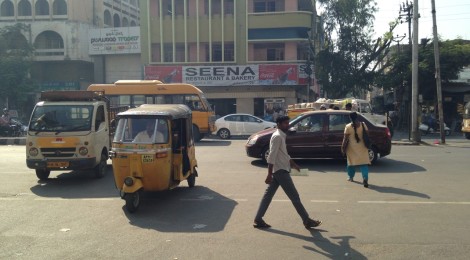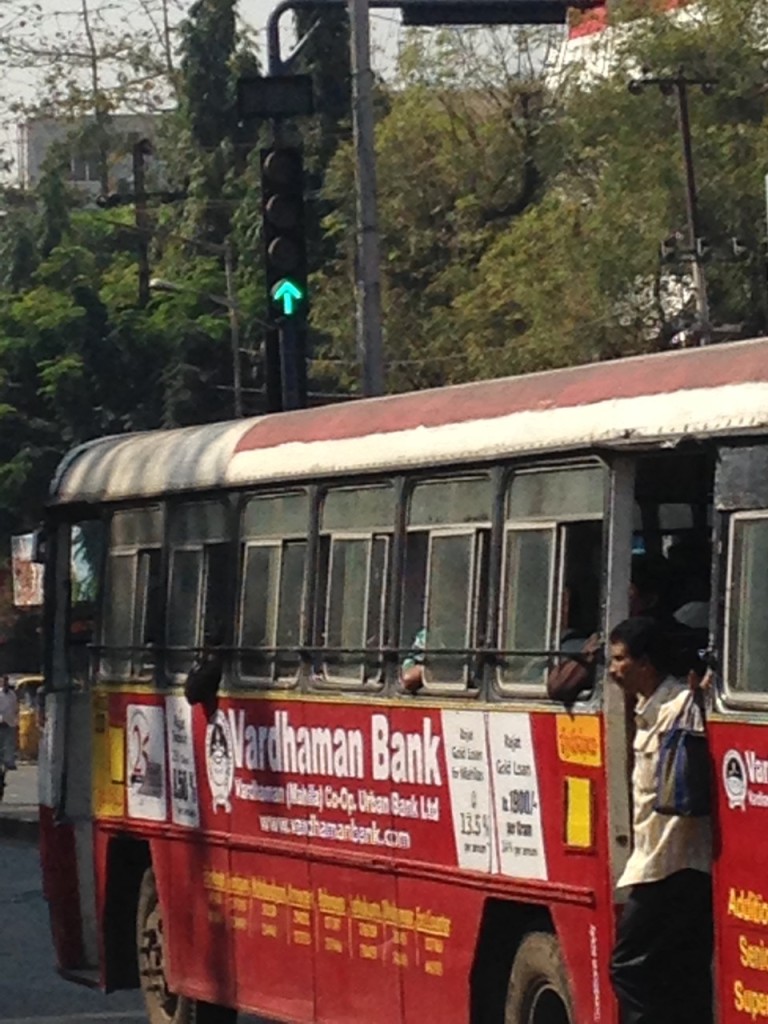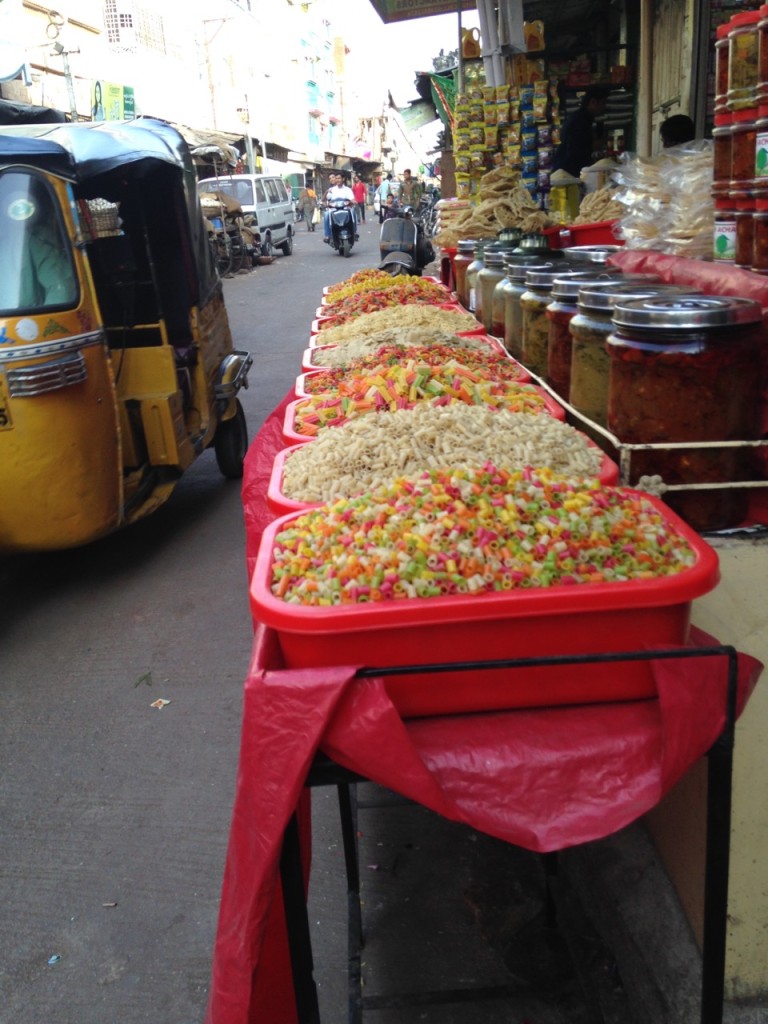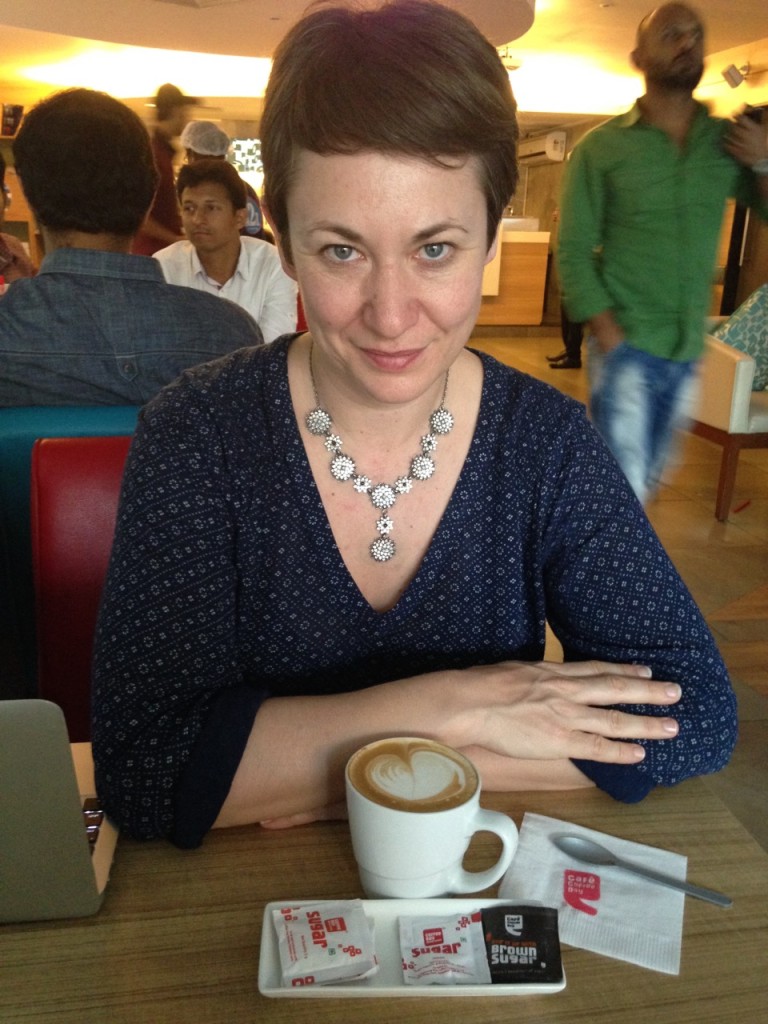
Hyderabad Ten Years On
Novelists have long known that time travel is easy:
Take a look—a sharp, tell-yourself-no-lies look—then shut your eyes. Better yet, go away. Return with open eyes.
This week I was a time traveler, returning to Hyderabad after a decade away. What caught the eye of H.G. Wells?
Cars: we take a zippy little cab from the airport into the center of the City after night has fallen. The cab is sparkling new. All the cars we see are much younger than ten years. Gone are the distinct round fenders of the ancient Ambassadors.
“So what,” you say. “Almost all the cars on the road are my country are less than ten years old. Nothing queer about that.”
There are two queer things about it.
In 2004, my guess at the average age of an auto would have been 25-30 years. The entire fleet has been replaced (and grown substantially) in less than 10 years. That is rapid modernization and it implies an equally rapid growth of production capacity or importation.
What’s more, ancient three-wheeled auto-rickshaws still cram the streets. Buses and trucks are as gaudy, as battered, and as prehistoric as ever. In these transportation sectors nothing has changed.
Air: the atmosphere is much, much worse. On the day we visited the Birla Mandir temple atop a rock outcrop at the center of the city, we could barely see the north shores of Hussain Sagar just a bit more than two kilometers away. Golconda Fort was lost in the smog.

One of Hyderabad’s workhorse buses trundles through a high-volume intersection on a green light. The conductor at the rear is scanning the street for would-be riders.
Stoplights: India has stoplights?!?! And people obey them? Yes, stoplights. And yes, people (mostly) obey them. Time travel and change are truly wondrous.
Pasta: noodles were unheard of a decade ago. Now market stalls highlight short, multicolored varieties that must be all the rage in upper crust homes. In my more comic imaginings I see them as a direct substitute for rice, mixed with dal on a plate and scooped into the mouth by the handful. My imagination is overactive: during our splurge meal at the upstairs buffet of the Hotel Taj Mahal, we spy a pasta station with a hatted chef churning out rotini and marinara.
Education: There is an amazing proliferation of colleges. Every second bus carries an advertisement for a technical or medical institute. Their signs are painted on buildings, they put their uniforms on their students. It is a tour de force in branding. We can only trust there is a tour de force of hiring to back up their graduates.
Someone must be hiring them, since there is a burgeoning market for all those little Tatas, Heros, and Marutis zooming though the streets.
Romance: ten years on it is still a treat to brush my pal’s hand as we traverse this bustling metropolis where public displays of marital affection are uncommon. Newlyweds? Can’t claim that status any more. Deep love? Appreciation? Spark? Got those in spades.
On Valentines Day we duck into a Café Coffee Day and make like upper class Hyderabadi teens, sidestepping the tradition of arranged marriage and having a clandestine date over coffee. Their motto: “A lot can happen over coffee.”
Postcards: even as late as 2012 Alison could buy picture postcards at the base of the Charminar. No more. We cannot find a single one.
Feet: a time traveler cannot but notice the ravages wrought by his journey. My feet have suffered attack after attack of gout in the decade since I last walked here. They tire. They blare alarm when I stub a toe.
And so I must wear heavier shoes, protective socks, and take medicine to modify my kidney function. Worse is yet to come ere another ten years pass beneath my soles.
Burqas: It is perhaps the greatest jolt to the time traveler. Many, many more women are wearing head-to-toe black now than they did just ten years ago. In 2004 the burqa was uncommon enough that seeing the garb in the solidly Muslim district around the Charminar was unsettling.
Now we see them uptown and downtown, in the swanky Banjara Hills and in the rough-and-tumble area around Segundarabad Station.
Are we seeing greater polarization of Islam within Indian society? Are we seeing a challenge by Muslim women to their Hindu counterparts? “You may have adopted our previous traditional dress, the salwar kameez, but we bet you won’t adopt this?” Or is it emancipation in progress? Perhaps there were just as many burqa wearers in 2004, but they were locked up inside homes. Now they are out and about in the streets, enjoying a newfound freedom of movement.
With the freedom to travel in time,
Chris


Let me know if you figure out the answer to the Burqua riddle. I am very interested to know if Islam is liberalizing or becoming more conservative in India.
No answer to the burqa riddle yet, but we’ve relocated to Rajasthan, so I’ll let you know if things look different here.
Gout? I had it one time in an elbow and it was excruciating. I could not imagine it in a foot. Walking would be impossible if it was even close to what I experienced. I hope the medicine and heavy shoes keep it at bay! Interesting observation and theory on the burqas. An additional theory: perhaps those women are thinking like your dad…you can’t wear what you don’t bring with you. That piece of wisdom has stuck with me all these years and my daughter can quote it “Yes, I know what your college friend’s dad said to him! I’ll bring my jacket.” :-). Happy trails!
Steve,
A sad truth related to my father is that he had weak kidneys and therefore suffered gout.
A sadder truth–from my perspective–is that I inherited both the weak kidneys and predilection for gout. It is immensely painful when it happens.
So far the probenecid has been doing its work and I’ve been gout-free. The shoes are doing their work, too, protecting the area of my foot that has degenerative arthritis due to repeated attacks of gout.
I hope that the muslim ladies of India and my dad are seeing eye to eye about heavy garments…it would ease a lot of people’s minds. I know they would see eye-to-eye on what to do with cattle. My father and the Hindu ladies might not agree about the proper handling of a cow, even if they are all lovers of cows.
On the trail in Rajasthan,
Chris